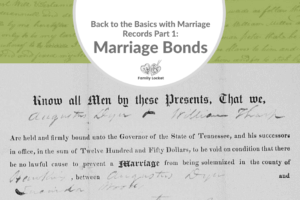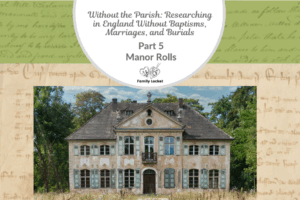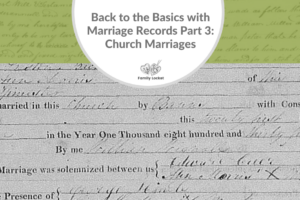In part 1 of this series, we discussed records of the parish chest that can help our research. This blog post will feature tax records, a valuable resource beyond parish collections. One might think taxes aren’t helpful to genealogy since they only name the individual paying the tax: typically, the head of a household who met the tax’s qualifications (age, residence, ownership of property, etc.). But tax records are invaluable because they date much further back than censuses, vital records, and even many parish registers. Taxes can place your ancestral family in a particular place and time, which can help you locate even more records (which will be discussed in Parts 3-5 of this series). Some of the oldest records in England were made for the purpose of taxes, and your ancestor’s name could be among them.
Here are some tax collections that are worth checking for your family:
Hearth & Window Tax
From 1662-1689, every household in England and Wales was taxed two shillings a year for each fireplace, hearth, or stove it owned. Surviving Hearth Tax records date from 1662-1666 and 1669-1674. This tax was replaced by the Window Tax, dating 1696-1851, in which households with seven or more windows were charged. The Hearth and Window taxes list the taxpayer’s name and the amount paid, which can tell you how many hearths or windows your ancestor’s home had (though some households boarded up their windows to avoid being taxed). Hearth Tax Digital has records covering Bristol, Cheshire, Coventry, Durham, Essex, Kent, Sussex, Warwickshire, and parts of Yorkshire and Westmorland. The E 179 database on the National Archives website includes the Hearth Tax and can give you a reference number to order the record through the National Archives. MyHeritage also has a searchable database. It’s also worth checking the FamilySearch Catalog by entering the name of the English county or parish and the phrase “hearth tax” or “window tax” in the keywords field.
For example, see the page of the Hearth Tax assessment from Hexham, Northumberland, 1664, below. 1

A page of the Hearth Tax assessment from Hexham, Northumberland, 1664
Marriage Duty Act
The Marriage Duty Act (1695-1706) and the subsequent Stamp Duty Act (1783-1794) placed a tax on baptisms, marriages, and burials recorded in the parish register. This is a great substitute if your ancestor’s parish records are missing or damaged. Unfortunately, many of these tax documents haven’t survived, but it’s always worth checking the County Record Office of your ancestor’s home parish in case records are available (Marriage Duty records survive for parts of London, Bristol, Leicester, Shrewsbury, Southampton, and Wiltshire).
Land Tax
Perhaps one of the largest tax collections, the Land Tax applied to land worth over a certain value (initially 20 shillings) from 1693 to 1963. Most surviving records cover 1780-1832. The Land Tax lists landowners, tenants & subtenants, type of land, and tax owed. The tax was collected (and recorded) annually, which can give you an idea of your ancestor’s movements and transitioning ownership of their land. Oftentimes not all the occupiers of a property were documented in the Land Tax, but it is still worthwhile to check for your ancestor. Go to the keywords field in the FamilySearch Catalog and enter your ancestor’s county or parish with the phrase “Land Tax” to see what records may be available.
For example, see the 1790 land tax assessment for the parish of Weare (Lower), Somerset.2

1790 land tax assessment for the parish of Weare (Lower), Somerset.
Poll Taxes and Lay Subsidies
These are among the few pre-1600 records that are of genealogical value. The poll taxes were a series of personal taxes in the 14th and 17th centuries to fund conflicts abroad, such as the Hundred Years War in France. The poll tax assessments recorded those eligible to pay the tax: individuals aged 16 and over who weren’t receiving poor relief. Sometimes the taxes even noted the individual’s occupation and relationship to other household members. The taxes were organized by county and “hundred,” a jurisdiction between counties and parishes. Find the hundred for your ancestor by going to FamilySearch Map and selecting the “Jurisdictions” tab for your ancestor’s parish.
Lay subsidies were taxes on personal property from 1100-1600. Church properties were often exempt from this tax. Subsidies for 1334-1523 only documented taxes by town, but records 1523 onwards listed individual taxpayers by name: typically anyone over 16 who had income or land worth £2. Surviving poll taxes and lay subsidies are part of the E 179 database on the National Archives website and are searchable by parish.
Perhaps one of the most valuable tax collections to British genealogy is the Death Duties, which will be covered in Part 3 of this series (Wills & Probate). For more wonderful information about tax records in Great Britain, check out Chapter 23 of Ancestral Trails: the Complete Guide to British Genealogy and Family History
All blog posts in this series:
Sources
- “Taxation Records,” LEARN, Northumberland Archives (https://northumberlandarchives.com/learn/property-history/taxation-records/), accessed June 2024.
- Hundred of Winterstoke (Somerset, England) Land Tax Assessments, Weare (Lower) Parish, 1766-1832, FHL Film 1545309 Item 11; digital image, “Catalog,” FamilySearch (https://www.familysearch.org/), accessed June 2024.














Leave a Reply
Thanks for the note!